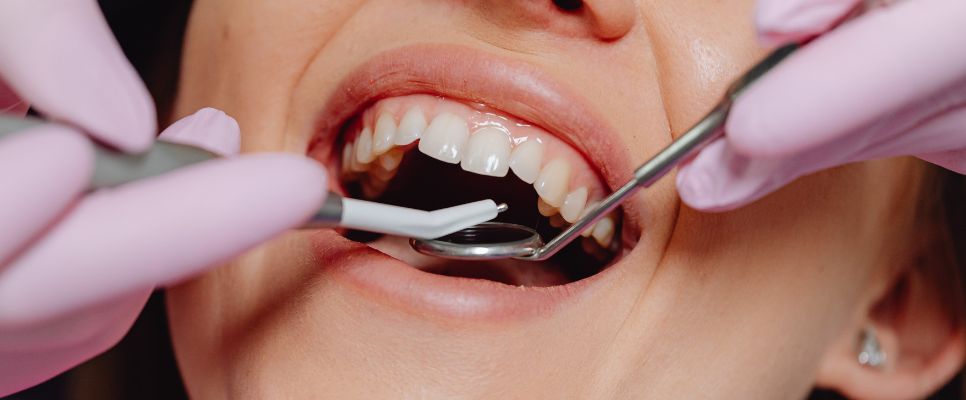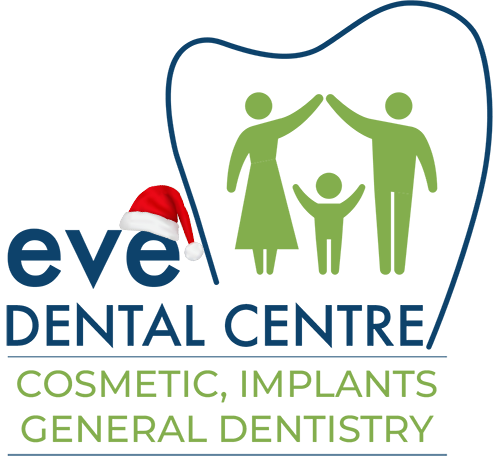Do Antibiotics Cure Tooth Infections? What You Need to Know
Do you know How Antibiotics Treat Tooth Infections?
Tooth infections are painful and swollen and pose a threat to health if not treated promptly. Such an infection occurs when the finely embedded, soft interior anatomy of a tooth, or around it, is invaded by bacteria. Dentists will sometimes prescribe antibiotics to inhibit the spread of bacteria.
Antibiotics are powerful medications that cure bacterial infections, but cannot by themselves cure tooth infections.

The discussion in this blog will focus on how antibiotics work, when you should take them, what types exist, and how useful they would be in managing dental abscesses. You will also find information on symptoms, risks, side effects, and how to recover appropriately.
What is Tooth Infection All About?
A tooth infection or dental abscess occurs when bacteria enter the root pulp of the tooth or surrounding tissues, forming a pus pocket. If not treated early, the infection could spread. Tooth infection is often triggered by the deep invasion of bacteria into the cyst, typically caused by dental caries, gum infection or disease, fissures in teeth, or trauma to the mouth.
Close to 700 different kinds of bacteria exist in the mouth, and while most are harmless or beneficial, some can lead to serious problems.
When the bacterial infection reaches the root of the tooth, it begins destroying tissues and triggers an immune response. The body sends white blood cells to fight the infection, leading to swelling, inflammation, and pus formation.
If left untreated, it could spread to the jaw, neck, or, in extreme cases, even the brain. Understanding how antibiotics treat tooth infections is crucial, as they help manage the bacterial spread while your dentist addresses the root cause.
Symptoms of an Infection in Teeth
You should recognise the early signs of tooth infection. Patients often notice it appearing suddenly and increasing in intensity.
- This could be a sharp pain that aches in your tooth or jaw close to the tooth; pain may radiate towards the ear, neck, and even the head.
- Your face may be swollen or your cheek.
- Fever, tiredness, and swollen lymph nodes may be present.
- Redness and tenderness may be felt in the affected tissue if touched.
- Sensitivity may be increased when ingesting hot or cold substances.
- Pimple-like bumps can appear on the gum.
- There may be an undesirable taste or a bad smell in the mouth.
These are the symptoms that bacteria have settled within. Consult dental care clinics immediately if one has any of these problems.
How Antibiotics Work in the Infection
How antibiotics treat tooth infections depends on their ability to eliminate or slow the growth of harmful bacteria in the body, especially in the mouth, helping control inflammation and prevent the infection from spreading further. Dentists prescribe them based on each patient’s condition and medical history.
Your body sometimes needs support in combating acute infections, and this is where antibiotics can be helpful, particularly if the infection has started to spread beyond the tooth.
However, antibiotics alone do not completely resolve a tooth infection. To fully treat it, the pus must be drained through procedures like a root canal, deep cleaning, or tooth extraction, removing the underlying cause of the infection.
How Antibiotics Function Against Bacteria
Antibiotics differ according to how they destroy bacteria. Some destroy bacteria by attacking the bacterial cell wall. Others prevent that bacterium from synthesizing proteins or reproducing in their DNA. In this way, the spreading of the disease is prevented and leaves good chances for the body’s recovery.
Certain antibiotics dissolve the walls of bacteria. When the wall dies, the bacteria are dead. This is the action of penicillin-type antibiotics.
Another substance, preventing bacteria from producing their proteins, which are required for reproduction, acts on tetracycline. No proteins, and no reproduction by the bacteria.
Other antibiotics also act against bacterial DNA. This way, bacteria would not reproduce. They include metronidazole, for example.
Each time, the type of antibiotic is chosen according to the microscopic type of bacteria and the seriousness of the infection.

Most Common Antibiotics Used in Tooth Infections
Dentists usually prescribe various classes of antibiotics to combat infection since each class has at least one drug that affects bacteria by a different mechanism.
Penicillins are the primary antibiotics used for these infections. Amoxicillin and penicillin V are bactericidal, which also sees wide use by dentists, which in turn provides broad bacterial coverage. When there is resistance to the choice of treatment, dentists will turn to clavulanate.
Cephalosporins, exemplified by cephalexin, operate like penicillin and are normally given if the patient has a hypersensitivity to penicillin.
Nitroimidazoles such as metronidazole are useful in the treatment of infections caused by anaerobic bacteria, or those that live in an oxygen-free environment. Sometimes, metronidazole is used along with amoxicillin for use in serious infections.
If you have a penicillin allergy, you may be given Macrolides, which include azithromycin and erythromycin. These are less common drugs, but they are as effective as other options.
Clindamycin and other lincosamides are very effective antibiotics reserved for cases of failure. They are effective against resistant infections that do not respond to standard treatments.
They are seldom utilized in the dental arena, except in specific instances, by fluoroquinolones and tetracycline.
Do not take any medications without proper guidance from a dentist based on your dental check-up.
When Do You Need to Take Antibiotics?
Antibiotics are needed in serious infections or if something spreads or puts a person’s life in danger through severe complications. Dentists also give antibiotics to avoid infections after any of these treatments or if the immune system is compromised.
Generally, antibiotics can be recommended when the tooth infection has an abscess accompanied by fever, or swelling outside the tooth abovementioned adjacent areas.
Although you might have felt better after just a couple of doses, please ensure that you end at the end of the course. This could be due to early withdrawal of treatment, wherein bacteria find a way to come back even stronger, thus bringing about antibiotic resistance or worse, relapse. The most immunocompromised persons who require early antibiotics cannot fight off the infection well.
Cases of tooth excruciations and very deep gum cleansings are considered high risk for infection. Therefore, dentists pre-emptively prescribe antibiotics before and after these procedures for the best measure.
Even if you feel better from taking the medication after a few doses, ensure to complete the course. Early stopping may allow bacteria to grow back stronger, thus developing antibiotic resistance or relapse.
How to Properly Take Antibiotics
Antibiotics are contained in tablets or capsules that infected persons swallow along with water. Follow strictly the directions from the dentist.
Take the drug exactly as prescribed. Do not miss doses. Complete the full course of treatment, even if the pain subsides after a couple of days.
The drug label tells how long to take it, how often a day, and yes, it should be taken with or without meals. If you still have questions, call your dentist or pharmacist.
Major Side Effects of Antibiotics
Antibiotics are caustic to bacteria and thereby responsible for a variety of side effects. These side effects may range from mild nuisance reactions to serious medical conditions.
Nausea, diarrhea, rash, and yeast infections are quite common side effects of the antibiotics given. These will usually resolve spontaneously.
Some people may experience excessive diarrhea. This is because antibiotics kill the good bacteria in the gut, allowing the bad ones (like Clostridioides difficile, or C. diff) to grow. If the diarrhea becomes very severe or does not resolve, consult your doctor.
Allergic reactions may not occur often, but they do at times, and symptoms of rash and hives may present. In some very rare cases, there is a chance of a life-threatening situation, which includes facial, lip, or throat swelling; wheezing, or difficulty in breathing. At the onset of any of these symptoms, see that you get emergency care.
How Long Do Antibiotics Work?
Some patients report feeling better in a few days after starting their antibiotic treatment, which is true, but it does not mean the infection is fully gone. For the greater part of people, 2 to 3 days of treatment lessens the severe pain and swelling; still, patients must follow through with the full prescription.
In many cases, a course of antibiotics will last for a week or more, which in turn gives the full dose of the medicine a better chance to eliminate all bacteria, thereby reducing the risk of a secondary infection. Make sure the medication is not interrupted unless told to by your doctor.
Benefits and Adverse Effects of Antibiotics
Antibiotics provide relief from pain and swelling, stop the infection from spreading, and support the immune system. Also, they reduce the risk of some serious complications.
Negative also is the issue of resistant bacteria, which have developed a tolerance to antibiotics and, as a result, are harder to eliminate in the future. Also, we see the problem of adverse reactions and allergies, which some patients may have to antiбиotic treatment.
Steer clear of antibiotics when they aren’t necessary. Their overuse causes health issues, which in turn sees the antibiotics’ value diminish.
Home Care for Patients on Antibiotics
While taking antibiotics, some home remedies can relieve your symptoms.
Gargling warm salt water may relieve discomfort and help rinse away debris from the infected site. An alternate rinse can be made using water and baking soda.
Use an ice pack on your jaw to reduce swelling; take non-prescription pain relievers such as ibuprofen to ease the pain.
Use a soft-bristled toothbrush to avoid irritating your gums. Avoid hot and cold foods. Stick to soft food, chewing on the side opposite the infected area.
These measures will minimize trauma to the affected area and promote healing.
Will Natural Remedies Be a Substitute for Antibiotics?
No natural remedy can take the place of antibiotics in treating a tooth infection. Some may reduce the bacteria or ease symptoms, but none will cure the infection.
Coconut oil for teeth can decrease bacteria. Saltwater rinses provide pain relief. However, none can reach or kill the bacteria in an infected tooth.
Only prescribed antibiotics plus dental intervention can help in stopping a tooth infection.
When to Consult a Dentist or Visit a Dental Clinic
Never contemplate pulling through a tooth infection. Seek the services of a dentist at the first sign of symptoms like pain, swelling, or pus. Early action will prevent the possibility of complications.
Diversion of antibiotics is not always the solution. A root canal or drainage will occasionally solve the problem. The dentist will check your tooth and recommend the correct treatment plan.
Infections do not heal on their own; they require professional help to stop the bacteria and eradicate the source of the problem.
Final Thoughts on: How Antibiotics Treat Tooth Infections?
Tooth infections are critical medical cases that need prompt intervention. How antibiotics treat tooth infections lies in their ability to support your immune system by allowing good bacteria to flourish and keep you safe. But that is only part of the solution; you still need to obtain dental treatment to remove the infected tissue.
Take antibiotics only as prescribed by your practitioner and consider the risks versus benefits. These will augment recovery as well.
By acting quickly on your dentist’s advice, you may recover faster and avoid more serious complications. Practice good oral hygiene, see your dentist regularly, and never delay seeking help until the issue worsens.



